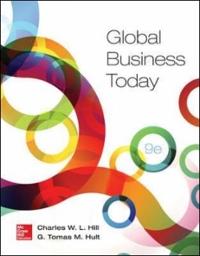Question
Suppose, in the Solow growthmodel, that learning by doing is captured as a cost of installing new capital. Inparticular, suppose that for each unit ofinvestment,
Suppose, in the Solow growthmodel, that learning by doing is captured as a cost of installing new capital. Inparticular, suppose that for each unit ofinvestment, r units of goods are used up as a cost to firms.
a. Determine how r affects thesteady-state quantity of capital per worker and per capita income.
Thesteady-state quantity of capital per workerequation, when adjusted forr, would be
A.
szf(k*)/(1+r) = (n+d)k*/(1+r)
B.
szf(k*) = (n+d/1+r)k*
C.
szf(k*)/r=(n+d)k*
D.
[s/(1+r)]zf(k*)=(n+d)k*
b. Now suppose that r differs across countries. How will these countries differ in the longrun? Discuss.
Given the effect that r has on thesteady-state quantity of capital per workerequation, where a larger value of r equates to having a
higher savings rate
lower savings rate
in the standard Solow growth model. If r were to differ betweencountries, a country with a high r will have
low income per capita in the steady state.
high income per capita in the steady state.
If differences between countries are only due to differences in the costs of installing newcapital, r, then countries with low costs of installing new capital would have
lower per capita income
higher per capita income
than countries with high costs of installing new capital.
Step by Step Solution
There are 3 Steps involved in it
Step: 1

Get Instant Access to Expert-Tailored Solutions
See step-by-step solutions with expert insights and AI powered tools for academic success
Step: 2

Step: 3

Ace Your Homework with AI
Get the answers you need in no time with our AI-driven, step-by-step assistance
Get Started


